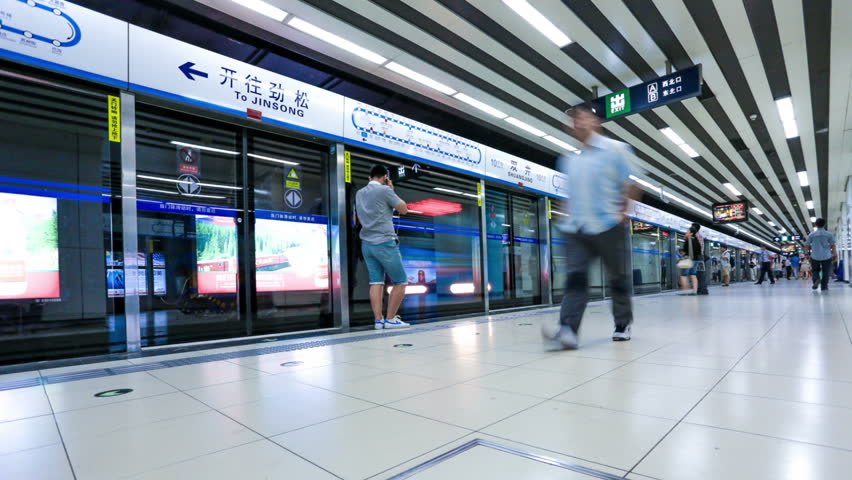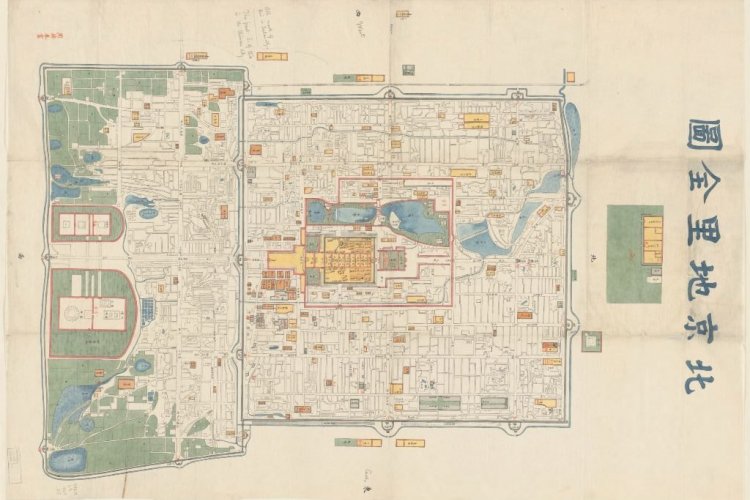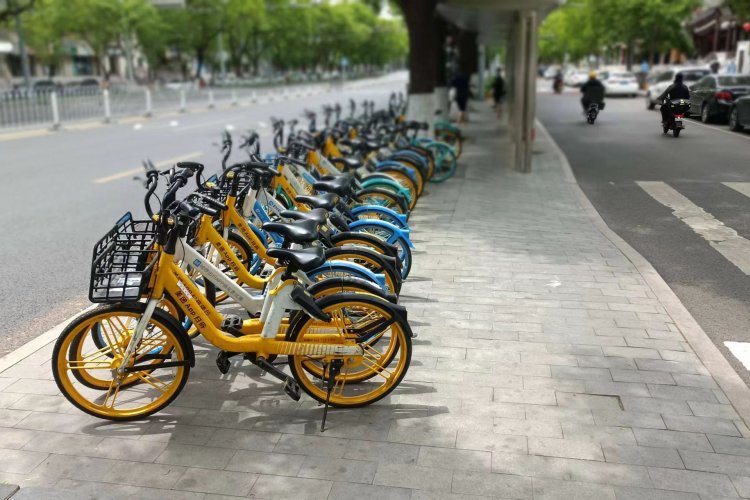The Subway Battles, Round 1: Beijing, Shanghai, Hong Kong
The metro is pretty much essential for Beijingers to make their way through our congested city of 22 million. It’s the most efficient transportation method in order to escape the traffic above ground, but how does it compare with other cities in China? To find out, we chose to look into the highly developed systems operating in Shanghai and Hong Kong, and considering six factors, used the Internet for research, questioned friends for further insight, and assessed personal experiences. To get a better sense of where each city stands on the spectrum, we rated each factor out of 10. The differences aren’t as drastic as expected, but every small aspect affects the experience of riders, demonstrating to us the successful execution of some systems and revealing the flaws of others.
Beijing (地铁 / ditie / subway)
Since 1969

Number of lines: 10/10
Eighteen lines (334 stations), including the airport express line to Beijing Capital Airport. It is the oldest metro system in China but surprisingly, before 2002, there were only two lines operating across the city. Since then, rapid development has led Beijing’s subway to become the world’s busiest metro in annual ridership, with 8.9 million riders daily– compared to 8.4 million in Shanghai and 4.6 million in Hong Kong. The city is continuously expanding and the extension of lines, past the Fifth Ring, is helping provide an easier commute into the city center for those living further out.
Tickets and pricing: 6/10
Varies upon distance traveled. Starting at RMB 3, going up to RMB 6 for journeys lasting 32km and an additional RMB 2 for every 20km further. These complicated rates are not easy for riders to remember and even frequent riders aren’t always aware of how the costs are calculated. Tickets can be bought from machines (which may or may not accept that RMB 20 bill that's been in your pocket for a week) and ticketing counters located at every station. There are, however, no day or monthly passes. A top-up card is also available from ticketing counters for a deposit of RMB 20. An ID is not required to obtain one, but it means there’s no way of retrieving it if you lose it. You’ll just have to buy another. The top-up card isn’t available from the machines, therefore, you’ll most likely need to communicate with the staff in Mandarin. Tickets are also necessary to exit the station.
Frequency: 8/10
Every 2 minutes during rush hour. Approximately 5-10 minutes otherwise, depending on the line. Delays are rarely experienced but you may encounter unexpected stops for a few seconds in tunnels or an unscheduled maintenance, requiring riders to take the next train.
Cleanliness: 10/10
Very clean with no visible trash in stations or on trains, with the exception that newer lines appear more modern and clean.
Safety: 7/10
All passengers are required to place belongings through a security scan upon entrance and water bottles are scanned by machines operated by staff, although the efficacy of these "checks" remains a mystery. There are usually three security members at every station entrance. All stations, except the older Line 1 and 2, have safety doors installed. They are expected to be installed for Line 1 and 2 by 2017 to prevent more accidents. Overcrowding is especially problematic during rush hour as train cars get packed quickly and many will still attempt to get on as the doors are closing.
Accessibility: 8/10
Stations are fairly easy to locate above ground with blue signs, but it’s best to know the directions as some stations are hidden behind the many skyscrapers in Beijing. Signs and announcements are in Mandarin and English. There are lifts and escalators in newer stations, making almost all the stations easily accessible for the disabled. Coming above ground, there are often maps to show which exit you have been spat out of but no means in which to get your bearings, which means without a nearby road sign or two or a good grasp of the city (or a smartphone), it can often be extremely confusing to know where you want to go.
Overall score: 8.2/10
Shanghai (地铁 / ditie / metro)
Since 1993

Number of lines: 10/10
Fourteen (364 stations), including airport transfer and the Maglev train running to and from Pudong International Airport. The Shanghai Metro is the world’s largest rapid transit system by length and second largest by number of stations.
Tickets and pricing: 8/10
Fares vary depending on distance. Starting at RMB 3, with additional RMB 1 for every 10km on journeys exceeding 6km. Special pricing for Line 5 with a discount of RMB 1. You may purchase tickets for a single journey, a one-day pass for RMB 18, a three-day pass for RMB 45, a top-up card with a deposit of RMB 20 or mobile tickets that can be scanned. Tickets are necessary to exit the station.
Frequency: 9/10
Every 2-3 minutes during rush hour. Approximately 4-12 minutes during off-peak hours. You may experience occasional delays but it’s uncommon.
Cleanliness: 10/10
Exceptionally clean, bearing a similar appearance to Beijing’s subway.
Safety: 7/10
Security checks are required upon entrance. Large bags and luggage to be passed through security scan, small bags checked by staff based on their judgment. Safety doors are installed, except for several older lines. However, not all the safety doors extend from floor to ceiling.
Accessibility: 9/10
Similarly to Beijing, there are signs in Mandarin and English. Stations are easier to locate by looking for the sign post outside stations with a red metro logo. There are lifts at every station, making it easily accessible for disabled passengers.
Overall score: 8.8/10
Hong Kong (港鐵 / gangtie / Mass Transit Railway (MTR))
Since 1979

Number of lines: 7/10
Nine (155 stations), including an Airport Express line to Hong Kong International Airport. The lines are connected well between Hong Kong Island, Kowloon and New Territories, so a journey by ferry is not necessary. It can be inconvenient for passengers traveling on longer journeys as multiple transfers are often required.
Tickets and pricing: 9/10
Fares vary depending on distance. You may purchase single journey tickets or the Octopus card. Prices range from HKD 4.50 to HKD 52 for single journey tickets, and HKD 4.50 to HKD 49.60 with an Octopus card. Frequent users have other options such as the MTR City Saver, monthly-pass, and day-pass.
Frequency: 10/10
Delays are rare. They have a 99 percent on-time rate and was referred to as the “world’s most envied metro system” by CNN.
Cleanliness: 10/10
Strict rules prohibit food, drinks, and smoking in stations and on trains, ensuring that cleanliness is maintained. A fine of up to HKD 5,000 is enforced if the rules are broken.
Safety: 8/10
There are no security checks, but lines have safety doors installed, except on the East Rail Line and Ma On Shan Line. The MTR Corporation publishes safety reports annually and provides booklets with information for customers with special needs to ride safely.
Accessibility: 10/10
Announcements are made in Cantonese, Mandarin, and English. Lifts are available at every station. You are able to search for disability services on their website, and a mobile app is also available to purchase tickets or check schedules.
Overall score: 9.2/10
Now you have the information needed to ride the metro in three of the busiest cities in China. Stay tuned for part two of this series, where we compare Beijing’s metro system to that of other major cities around the world.
Thank you to Nicole Chen and Sara Kwon for providing information from their personal experiences to this article.
Photos: China.org.cn, Shutterstock, Like a Fish in Water, Hong Kong Shuttle
Related stories :
Comments
New comments are displayed first.Comments
![]() admin
Submitted by Guest on Tue, 08/16/2016 - 14:47 Permalink
admin
Submitted by Guest on Tue, 08/16/2016 - 14:47 Permalink
Re: The Subway Battles, Round 1: Beijing, Shanghai, Hong Kong
How about including ease of transfer between lines as a factor in this analysis? I've not been particularly impressed with that here on BJ's subway system.
yeah that's the beijing system's biggest foible -- long transfer times
![]() admin
Submitted by Guest on Tue, 08/16/2016 - 14:46 Permalink
admin
Submitted by Guest on Tue, 08/16/2016 - 14:46 Permalink
Re: The Subway Battles, Round 1: Beijing, Shanghai, Hong Kong
Beijing should lose a bunch of points for closing so early, often the last train home is before 11pm. Hong Kong subway runs until 1am.
agreed. Defies logic in a city so large and so 24hr
![]() britomart
Submitted by Guest on Tue, 08/16/2016 - 09:30 Permalink
britomart
Submitted by Guest on Tue, 08/16/2016 - 09:30 Permalink
Re: The Subway Battles, Round 1: Beijing, Shanghai, Hong Kong
How about including ease of transfer between lines as a factor in this analysis? I've not been particularly impressed with that here on BJ's subway system.
Validate your mobile phone number to post comments.







